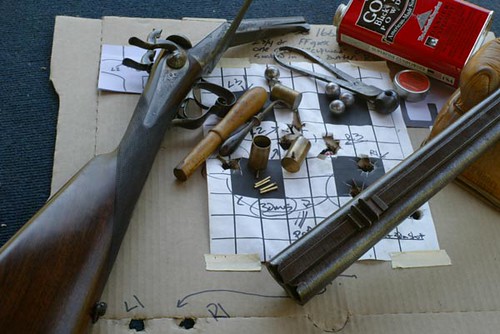| tinker |
| (.416 member) |
| 05/11/07 02:12 PM |

|
|
|
Daryl, Curl-
I spent this lazy sunday at home rendering oil from the fat of the bear I took home from my last hunt.
I have over a gallon of it here in jars, in my meat locker at ~-11c or ~11f most of it is staying in the liquid state. The first two half-pint jars were from exterior fat and the rest of it from the luscious butterball fat from around the animal's muscles.
Having read around the web looking for a proper rendering process, I ended up trying three different methods -- chunks of fat tossed in a big kettle of boiling water on the stove..., chunks of fat tossed into a big hot kettle (no water) on the stove..., and a big roaster in the oven, set to ~250f
I like the oven roaster method the best. I got the best yield with the least fuss and the oil I got from that method was much more clear from the start.
I gave up on the stovetop methods very quickly.
I'm thinking of taking a quart of it to the lab and running it in a centrifuge or putting it through a vacuum filter rig to seperate what little solids are left in the clear light amber oil (I have the equipment there, might as well use it on my bear oil...)
Can you guys think of a good reason not to take filtration to such a high level of purity?
Cheesecloth can only do so much after all.
--Tinker